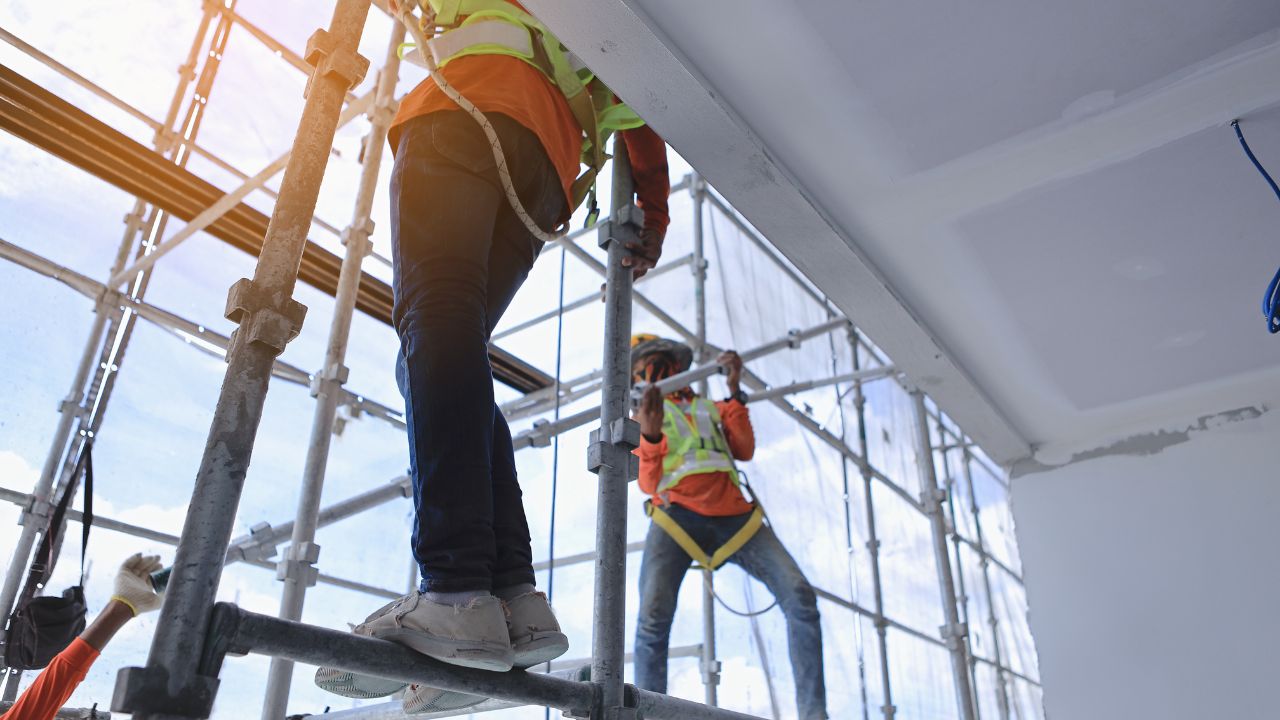Working on scaffolding is a risky business. One wrong move, one piece of faulty equipment, and you could be facing serious injuries or costly lawsuits. Your basic scaffolder liability insurance is a good start, but is it really enough to protect you when the worst happens?
As a scaffolder, you take pride in building solid structures and keeping your crew safe. But even the best precautions can’t prevent every accident. Maximising your scaffolder’s liability insurance with the right additional coverage is how you demonstrate true responsibility – to your business, your employees, and your clients.
Before we talk about the extra coverage that could save your business, first let’s assess the factors that determine whether you need the extra coverage.
Factors That May Require Increased Coverage
Your basic scaffolder liability insurance is essential, but it might not be enough in every situation. Here are a few scenarios where you should consider boosting your coverage:
- High-Value Contracts: When you’re working on large, expensive projects (think luxury developments or infrastructure work), the potential cost of damages or injuries skyrockets. A standard liability policy may only cover a portion of potential claims, leaving you vulnerable to significant financial losses. Increased coverage provides a stronger safety net.
- Working in Riskier Settings: Some environments pose a greater danger than others, increasing the likelihood of an accident. Examples include:
- Height: Working on extremely tall structures increases the severity of potential falls.
- Weather: Locations with frequent storms, high winds, or extreme temperatures bring extra risk factors.
- Proximity to hazards: Sites near busy roads, power lines, or other potential dangers warrant extra coverage.
- Subcontracting Used: If you bring in subcontractors, your liability extends to their actions. You could be held responsible for accidents or damages they cause, even if it’s beyond your direct control. Increased coverage or specific policies for subcontractors can help mitigate this risk.
Don’t risk your livelihood! Review your scaffolder insurance today and consider the added protection that fits your business. Get started with a free quote on Tradies365.
Learn about the 5 major risks the simple scaffolding liability insurance protects against.
 Why Standard Scaffolding Insurance May Fall Short
Why Standard Scaffolding Insurance May Fall Short
Scaffolder liability insurance usually includes public liability as its core component. This is vital because it protects you against third-party injury or property damage claims. However, there are crucial risks that standard coverage might not address:
- Damage to owned equipment while in transit/on-site: A truck accident damages your tools, or extreme weather ruins essential scaffolding components. Standard policies might not reimburse you for these losses.
- Accidental damage YOU cause to client property while working: Imagine dropping a heavy tool and damaging an expensive window on the client’s building. This could exceed basic public liability limits.
- Theft of critical scaffolding components: Scaffolding is attractive to thieves. Your standard insurance may not cover the full cost of replacing stolen equipment.
- Lawsuits over faulty work, even well after it’s finished: A problem with your scaffolding causes a delayed injury or building damage discovered months later. Standard liability policies might have time limits or exclusions for these circumstances.
Understanding these gaps in coverage is essential. The right add-ons provide a more comprehensive safety net for your business, ensuring protection against a wider range of risks specific to the scaffolding trade.
Build peace of mind along with your scaffolding. Upgrade your insurance for a stronger safety net. Compare tailored coverage options and get your free quote.
Here’s a detailed breakdown of key additional coverages, specifically tailored to address the needs of scaffolding businesses:
Key Additional Coverages for Scaffolding Businesses
- Tools and Equipment Cover: It can protect your investment in essential scaffolding components, tools, and specialised machinery. This covers damage or loss due to theft, fire, accidents, weather events, and more. You’ll get reimbursed for the cost of repair or replacement, ensuring your business can get back to work quickly.
- Accidental Damage Extension: This expands your core public liability to cover accidental damage you or your employees cause to the client’s property. This could include dropping equipment, damaging finishes during installation, or causing structural issues due to incorrect setup. It protects you from financially crippling claims.
- Product Liability: This is vital if you design, manufacture or supply any scaffolding components. It safeguards against lawsuits alleging injuries or property damage caused by a defect in your product, even if it happened well after installation.
- Professional Indemnity: Protects against claims of negligence or errors in your advice, design, or installation of scaffolding. This could include lawsuits over faulty work that leads to injury or property damage later on. Professional indemnity helps cover legal costs and potential compensation payouts.

Maximising your scaffolder’s liability insurance isn’t just about protecting yourself today – it’s about securing the future of your business. With the right coverage, you’ll gain the confidence to bid on bigger contracts and grow your operation without fear of financial ruin.
Ready to get the right coverage for your scaffolding business? Visit Tradies365’s insurance or contact us directly and get a free quote today. Don’t leave your livelihood to chance – protect it!
Learn More
1- Understanding scaffolding insurance regulations and standards for insurance in Australia
2- Scaffolders liability insurance, protecting your crew and livelihood.
Note: The material offered here is for informational purposes only. It does not constitute legally binding advice and should not be a substitute for a consultation with an insurance expert.
